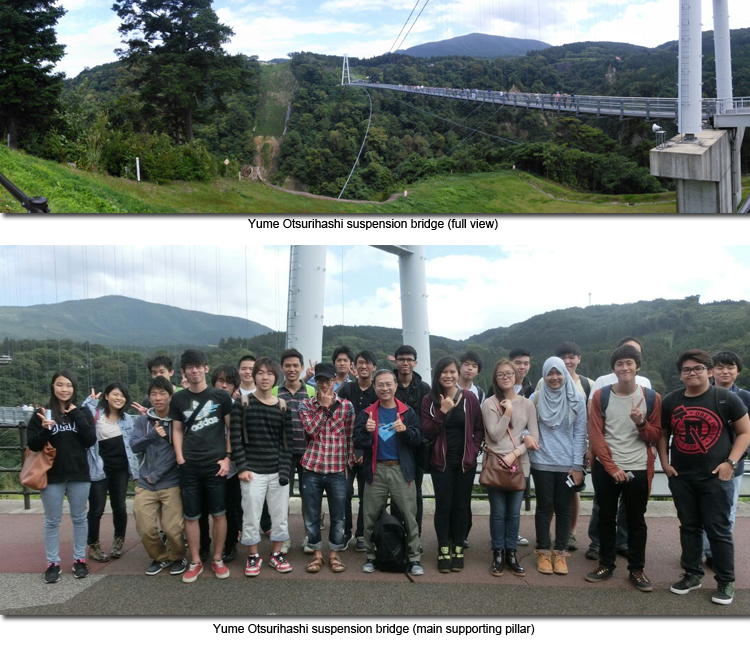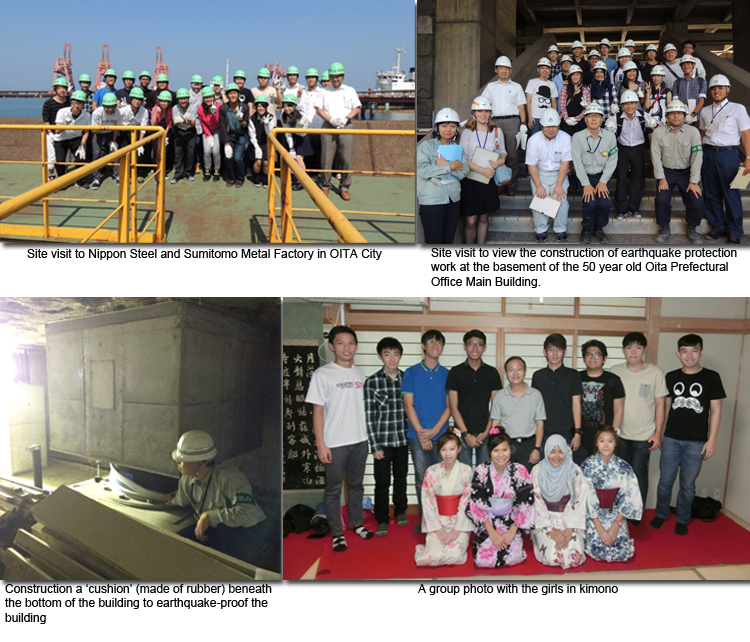The overseas study trip to OITA, Japan was from 24th September to 2nd October 2014. Twelve students from Diploma in Civil Engineering with Business (DCEB) were selected for the trip. Technical visits were arranged to the government prefecture office and the Nippon Steel Factory. There were tours to Beppu, the hot springs and related civil engineering infrastructure projects like suspension bridges and many sightseeing spots like Kuju flower park, Ono river, Aso mountain, Kokonoe Yamanami Farm, Yufuin, Hot Spring etc.
There was opportunity to experience Japanese culture, tradition and heritage (calligraphy, tea ceremony and Japanese “Kimono”). DCEB and ONCT staff and students also Interacted during lectures, tutorials, workshops, site tours, sharing sessions and discussions.
Also exposure to the Japanese educational system will allow DCEB staff and students to keep abreast of the latest trends in the developments and technology within the construction sector in Japan.

One of the most unique experience that students had was walking through the production line of Nippon Steel Factory. They saw the manufacture of steel and how Nippon Steel maintain an Eco-friendly environment through planting of trees around the factory and even cleaning the exhaust before discharging into the atmosphere.
The Kokonoe “Yume” Otsurihashi suspension bridge. It was a remarkable experience to cross the bridge from one end to the other in a short period of time while experiencing many things. We were able to see the “Shindo-noTaki” waterfall and felt the swaying of the bridge caused by a gust of strong wind occurring briefly for a few minutes.

In Japan, there is a need to construct buildings that will not collapse due to earthquakes. This building was built 50 years ago and therefore the chances of collapsing under the onset of earthquake is high. For this reason, construction of an earthquake protection measures is necessary to prevent the building from shaking. A concrete frame is constructed underneath the building and a piece of apparatus with rubber material is inserted that ensures the building will not shake.
All of us experienced Japanese culture: the girls got to wear the kimono, we went through the Japanese tea ceremony and tried out calligraphy.